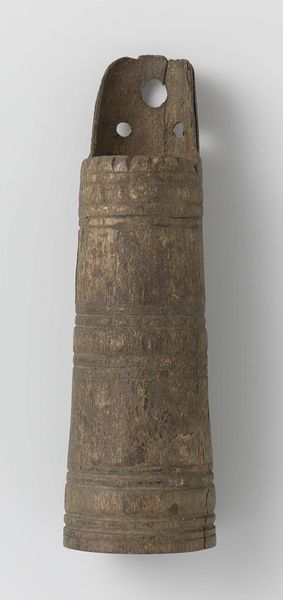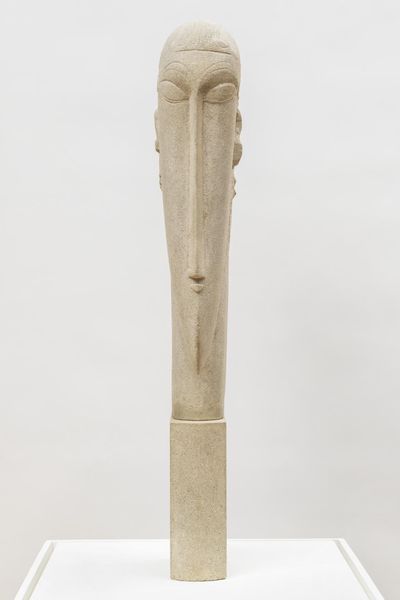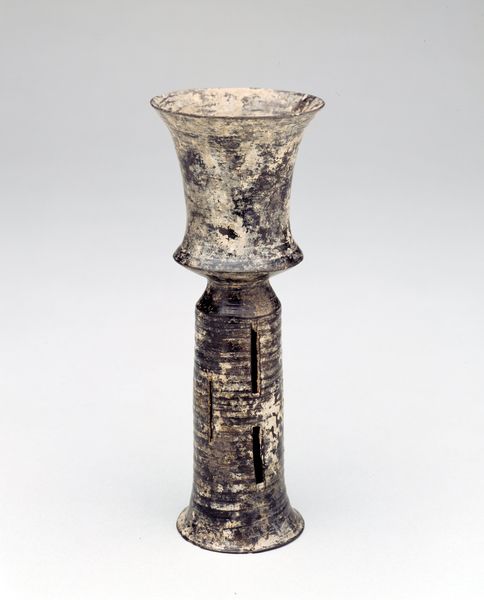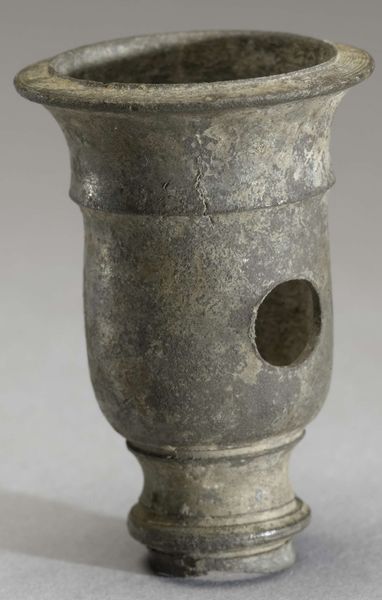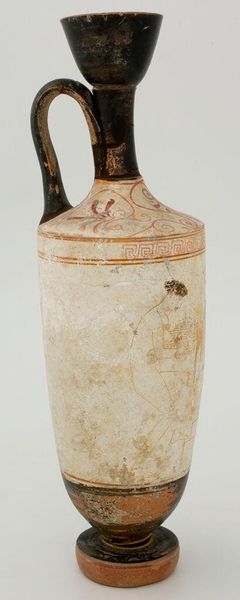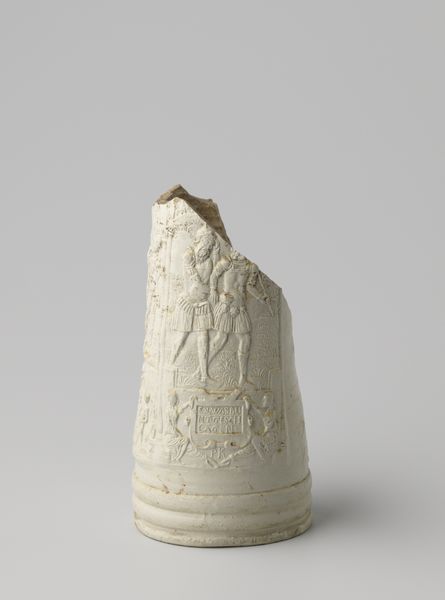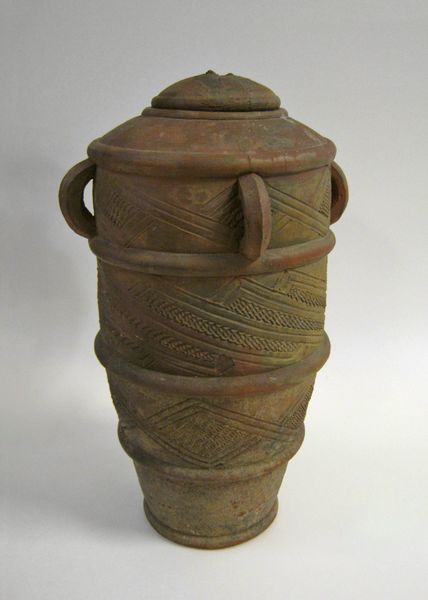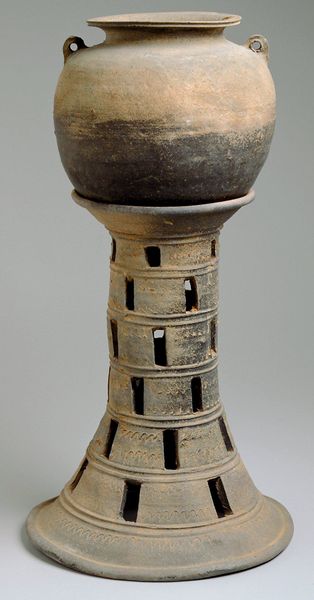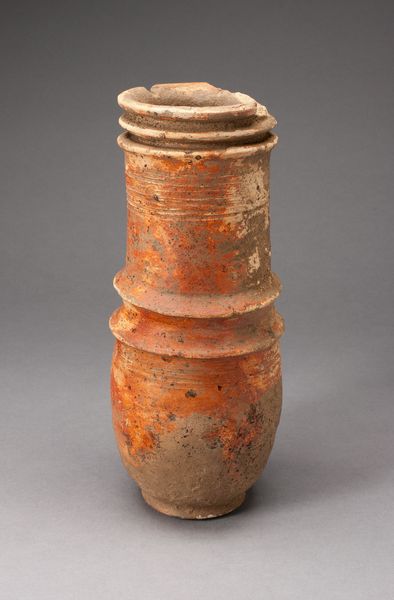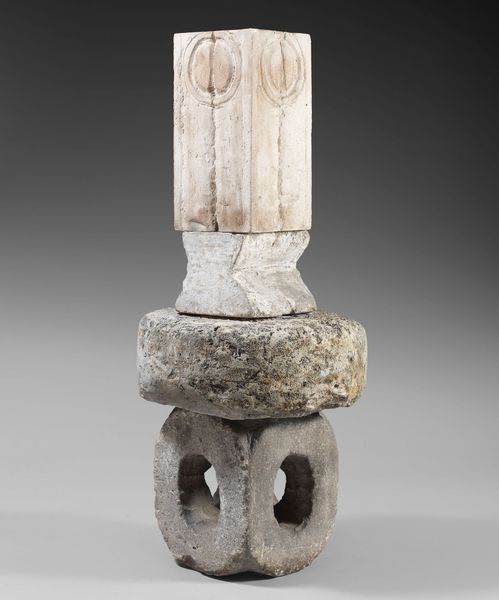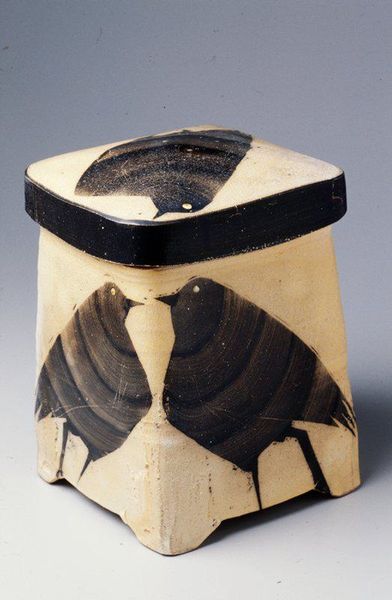
carving, sculpture, plaster
#
portrait
#
carving
#
sculptural image
#
figuration
#
sculpture
#
plaster
#
ceramic
#
academic-art
#
realism
Dimensions: 22.2 cm (height) (Netto)
Editor: Here we have H.W. Bissen’s “Fru Sophie Thiele, f. Holten stående med et barn på armen,” a plaster sculpture dating back to 1836. There’s a certain stillness to the piece, despite the clear bond between mother and child. How would you interpret this work focusing on the elements? Curator: Indeed. Observe how Bissen manipulates the material. The plaster, while seemingly homogenous, reveals subtle gradations in texture. Notice the rough, almost unfinished quality around the figures' faces, contrasting with the smoother treatment of the drapery. This contrast isn’t accidental. Consider the light. How does it interact with these varying surfaces, creating shadows that define form and evoke a particular emotional response? Do you notice how the verticality of the pedestal supports, almost anchors, the composition, yet the slight contrapposto of the figure introduces a gentle dynamism? Editor: I see what you mean about the interplay of rough and smooth textures; it creates a kind of visual rhythm. I hadn't thought about the way the pedestal interacts with the figure itself, giving it weight. Do you see any visual devices that relate to classical sculpture? Curator: Precisely. Bissen seems engaged in a dialogue with Neoclassical ideals, perhaps nodding to antique statuary while subtly subverting them. Consider the relative lack of idealization, and Bissen has captured something more akin to lived experience, subtly interrupting any perfect symmetry or flow. There are also suggestions, or symbolic potential, through use of the structural devices? Editor: This conversation has opened my eyes to the artistic language embedded in the sculpture’s form and materials. Curator: Likewise; re-examining the artist’s use of plaster and his choices around finishing—or not—helps reveal layers of complexity in what appears a straightforward portrait.
Comments
No comments
Be the first to comment and join the conversation on the ultimate creative platform.
